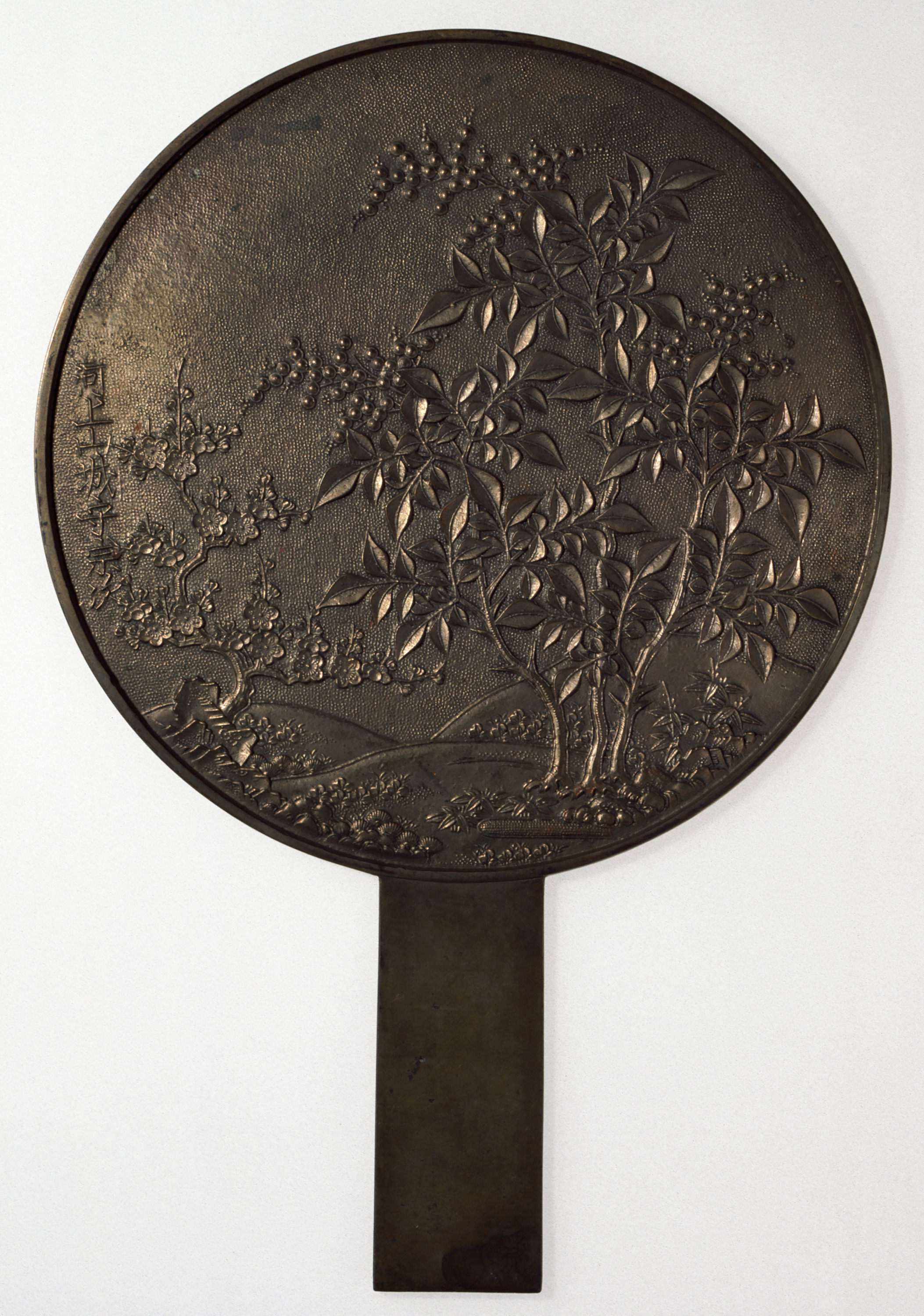- TOP
- Hand Mirror with Nandia
Overview
Hand Mirror with Nandia
- Museum No.
- EK203
Showing 1-6 of 1
| Title | Hand Mirror with Nandia |
|---|---|
| Designation | |
| Artist | Kawakami Munetsugu |
| Category | Metalwork(E), Bronze Mirrors |
| Country | Japan |
| Period | Edo Mid-term |
| Century | 18th |
| Year | |
| Quantity | |
| Materials | |
| Dimensions | Diameter 21.2cm Rim height 0.4cm Rim width 0.2cm |
| Inscription by | |
| Signature/Seals Etc | |
| Donor |
This object may be one within a set or the title of a set. To see all objects in the set, perform a Category Search by the Museum Number below, entering numerals only before the hyphen.








This mirror with a medium-size straight rim is made of whitish brass, and its surface is plated with tin. On the upper right of the inner side of the rim is a lump resulting from the casting. In the 18th century, as in this example, mirrors 7-sun (21.2 cm) in diameter became widely popular as the standard size. Fine granules, sparsely but evenly distributed on the surface of the mirror back, are one of the features of the mid-Edo period (1615-1868). Nandina is an auspicious motiff because of a play on homonymous characters meaning "turning from difficulty," and is a favorite mirror design. Examples of the work of the governor of Yamashiro Province (part of present-day Kyoto Prefecture), Kawakami Munetsugi (n.d.), begin to appear in the late 17th century. In the early 18th century, he established himself in Kyoto, on Takoyakushi Street, west of Karasuma, and took the name Munetsugi. Most of the extant examples of his work feature the design of the utopian Mount Penglai (J., Hôrai).
Japan-Edo-Mid